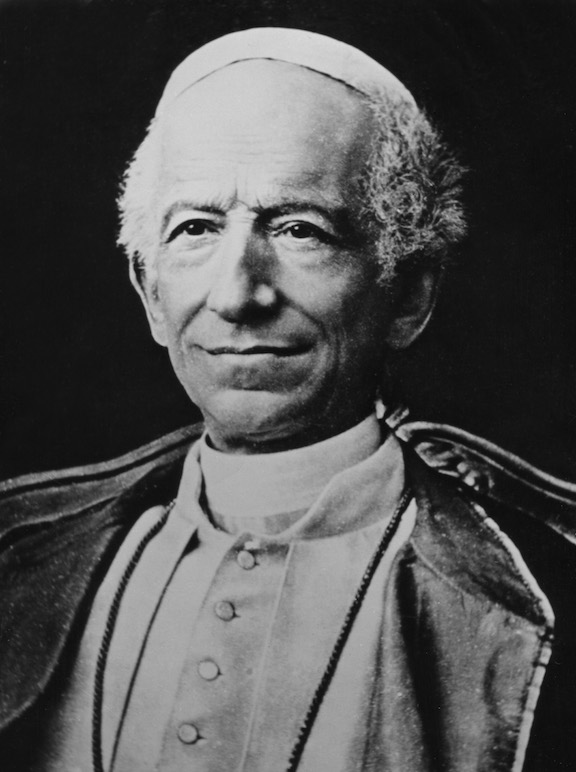The Traumatic Foundation of Male Homosexuality
As a psychologist treating homosexually oriented men, I’ve watched with dismay as the LGBT movement has convinced the world that “gay” requires a revised understanding of the human person.
The psychological profession is much to blame for this shift. Once, it was generally agreed that normality is “that which functions in accordance with its design.” There was no such thing as a “gay person,” for humanity was recognized as naturally and fundamentally heterosexual. In my 30-plus years of clinical practice, I have seen the truth of that original anthropological understanding.
Homosexuality is, in my view, primarily a symptom of gender trauma. Although some people may have been born with biological conditions (prenatal hormonal influences, inborn emotional sensitivity) that make them especially vulnerable to such trauma, what distinguishes the male homosexual condition is that there was an interruption in the normal masculine identification process.
Homosexual behavior is a symptomatic attempt to “repair” the original wound that left the boy alienated from the innate masculinity that he has failed to claim. This differentiates it from heterosexuality, which arises naturally from undisturbed gender-identity development.
The basic conflict in most homosexuality is this: the boy—usually a sensitive child, more prone than average to emotional injury—desires love and acceptance from the same-sex parent, yet feels frustration and rage against him because the parent is experienced by this particular child as unresponsive or abusive. (Note that this child may have siblings who experienced the same parent differently).
Homosexual activity will be the erotic reenactment of this love-hate relationship. Like all the “perversions”—and I use that term not to be unkind, but in the sense that homosexual development “perverts,” or “turns a person away from,” the biologically appropriate object of erotic attachment—same-sex eroticism contains an intrinsic dimension of hostility.
Thus, homosexuality is inherently rooted in conflict: conflict about the acceptance of one’s natural gender, conflict in the parent-child relationship, and usually, conflict regarding ostracism by same-sex peers. This means we will see the emergence of dominance-submission themes contaminating gay relationships.
For the homosexually oriented man, sexuality is an attempt to incorporate, “take in,” and “master” another male. It functions as a symbolic “possession” of the other person that is often more aggressive than loving. One client described his sexualization of fear-provoking men as “the victory of the orgasm.” Another, as the “orgasmic painkiller.”
There are some exceptions to the trauma model of homosexual development. We have found at our clinic another form of homosexuality that is characterized by a mutual, affectional attachment, most often seen in our adolescent clients and in some immature adults. In this type of homosexual attraction, there are no hostile-dependent features, but rather, a romantic adolescent quality—an infatuation that has a sexual manifestation. Such liaisons may occur for a period of months or years and then be abandoned, never to be resumed, as this phase of attraction passes.
Still, the general rule remains: If a child is traumatized in a particular way that affects gender, he will become homosexual, and if you do not traumatize a child in that particular way, the natural process of heterosexual development will unfold.
Many gay men report sexual abuse by a same-sexed person during their boyhood. Sexual molestation is abuse, because it comes disguised as love. Here is one client’s account of an older teen who molested him:
I wanted love and attention, and it got all mixed up with sex. It happened during a time when I really had no sexual interest in other boys… I thought he [the abuser] was cool. He never gave me any attention unless he wanted to fool around. When we did get sexual, it felt special… It felt exciting and intense, something between us, a shared secret. I had no other friends and my lousy relationship with my father didn’t help. I was looking for friendship…[but] the intensity of the memory… I hate it. The whole thing is just disgusting, disturbing…. This is the root cause of my same-sex attraction.
This client had made the following association: “In order to receive the good: i.e. ‘love’ and ‘attention,’ I must accept myself as shameful and bad: engaging in activity which is ‘frightening,’ ‘forbidden,’ ‘dirty,’ and ‘disgusting.’ ”
In therapy, as this client attended to the feelings in his body during an unwanted homo-arousing moment, he discovered that before he felt a homosexual feeling, he would invariably experience the sense of having been shamed by another man. In a reenactment of his childhood abuse, the “shamed self” proved to be a necessary prerequisite to his homosexual arousal.
The relationship between this client’s past abuse and his present-day homosexual enactment is an example of a repetition compulsion. In the search to find love and acceptance, he becomes entangled in repeating a self-defeating and self-punishing behavior, through which he unconsciously seeks to gain final victory and resolve his core injury. Repetition compulsion contains three elements: (1) attempt at self-mastery, (2) a form of self-punishment, (3) avoidance of the underlying conflict.
For such men, the pursuit of fulfillment through same-sex eroticism is spurred by the fearful anticipation that their masculine self-assertion will inevitably fail and result in humiliation. They opt for a ritualized reenactment with the hope that, unlike all other past occasions, “This time, I will finally get what I want; with this man, I will find masculine power for myself,” and “this time, the nagging sense of internal emptiness will finally disappear.” Instead he has given one more person the power to reject him, shame him, and make him feel worthless. When the shame-producing scenario is played out over and over again, this only reinforces his conviction that he really is a hopeless victim and ultimately unworthy of love.
Gay men often report craving an “adrenalin zap” which is heightened by an element of raw fear. There is an entire gay subculture of public sex that revels in the thrill of acting out in places like parks, public bathrooms and truck stops, and is erotically driven by the fear of discovery and exposure.
The act of sodomy itself is intrinsically masochistic. Anal intercourse, as a violation of our bodily design, is unhealthy and anatomically destructive, damaging the rectum and spreading disease because the rectal tissues are fragile and porous. Psychologically, the act humiliates and demeans a man’s dignity and masculinity.
Compulsive sexual acting-out—with its high drama and its promise of gratification—masks the deeper, healthier underlying drive to gain authentic attachment.
The dysfunction of the gay male world is undeniable. Scientific studies offer us evidence for the following sad comparisons:
Sexual Compulsivity is more than six times greater among gay men.
Gay men engage in partner interpersonal violence three times more often than do heterosexual men.
Gay men engage in the sadistic practices at much higher rates than do heterosexual men.
The incidence of mood disorders and anxiety disorders is almost three times greater among gay men.
Panic Disorder is more than four times greater than for heterosexual men.
Bipolar Disorder is more than five times greater than heterosexual men.
Conduct Disorder is almost four times greater (3.8) than heterosexual men.
Agoraphobia (fear of being in public places) is more than six and a half times greater than among heterosexual men.
Obsessive-Compulsive Disorder is more than seven times greater (7.18) than heterosexual men.
Deliberate Self Harm, (suicidality) is more than twice (2.58) to over ten times (10.23) greater than among heterosexual men
Nicotine Dependence is five times greater than heterosexual men
Alcohol Dependence is close to three times greater than among heterosexual men
Other Drug Dependence is more that four times greater than heterosexual men.
Promiscuity is well-illustrated in the classic research of McWhirter and Mattison, two gay men who reported in their book The Male Couple (1984), that of 165 relationships they studied, not a single pair was able to maintain fidelity for more than five years. The authors—a gay couple themselves—were surprised to discover that outside affairs were not only not damaging to the relationship’s endurance, but were in fact essential to its very survival. They conclude: “The single most important factor that keeps couples together past the ten-year mark is the lack of possessiveness they feel” (p. 256).
By recognizing the love-hate dimension in homoerotic activity we can empathize with the homosexual man’s reparative attempt at resolution of his childhood trauma. This offers us a window of understanding as to why there continues to be deep dissatisfaction in the gay community in spite of unprecedented gains in gay social acceptability.
Homosexuality has no significance in the natural world other than as a symptom, a consequence of tragic events. Otherwise it is otherworldly, a figment made of fantasy and desire. But through the help of social media, Hollywood and political force (most recently, the Obama administration), a new definition of the human person has been invented. This linguistic sleight-of-hand has created a figment of the imagination; an erotic illusion has hijacked reality. Classical anthropology has been turned on its head and a new man has been contrived. When a person labels himself “gay,” he moves himself out of the natural realm and disqualifies himself from fully participating in human destiny.
From father to son to grandson to great-grandson, a man’s seed is his link to the generations. Through his DNA, he lives on in other lives. When implanted into the woman’s womb, his seed produces human life. But in homosexual sex, the seed of life can only result in decay and death.
In the natural sex act, the human race is preserved, and the man lives on through future generations. But in the trauma-driven sex act that violates our bodily design, his generative power engenders death and annihilation. And so the wisdom of the body presents this contrast: new life vs. decay and death.
No wonder we see so much dissatisfaction in the gay world; not just because of society’s disapproval, but because the man who lives in that world, senses the futility of a gay identity. It represents the termination of that long line of his ancestors who were once linked together, through the ages, in natural marriage.
In the real world, a gay identity makes no sense. Only as a symptom, as an eroticized reparation for attachment loss, does homosexuality have meaning.




